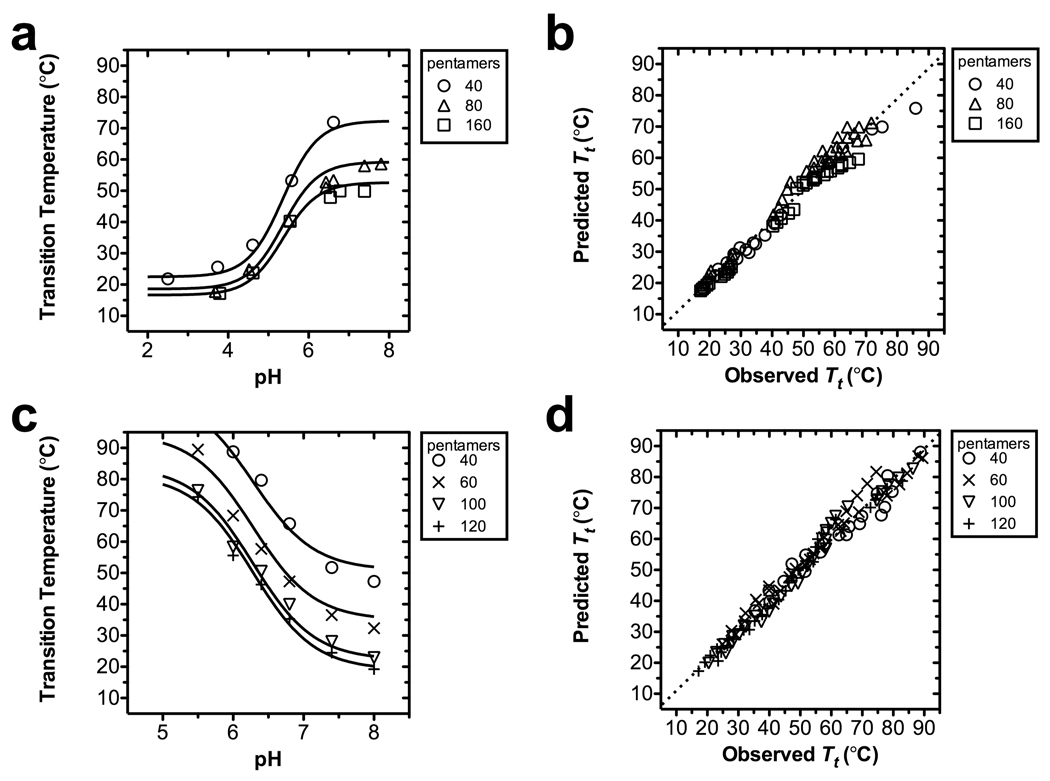Figure 3.
The pH dependence of the ELP phase behavior. ELP transition temperatures plotted as a function of pH. For each ELP chain length, a best-fit curve following Eq. 10 has been indicated (Table 3). (a–b) An acidic ELP library containing guest residues V:I:E [1:3:1]. (a) Transition temperatures as a function of pH at 100 µM. (b) Predicted vs. observed transition temperatures for global fit (R2 = 0.98, n=87). (c–d) A basic ELP library containing guest residues V:H:G:A [1:2:1:1]. (b) Transition temperatures as a function of pH at 100 µM. (b) Predicted vs. observed transition temperatures for global fit (R2 = 0.98, n=113).

